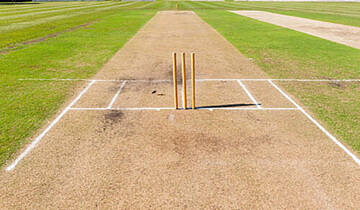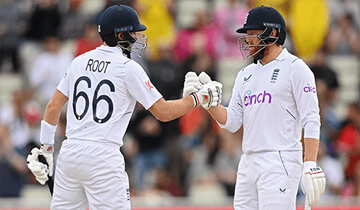Cricket is one of the most popular sports in the world, with billions of fans across many countries. However, it has not been part of the Olympic Games since 1900. At that time, only two countries competed in the cricket tournament - Great Britain and France. Cricket was subsequently dropped from the Olympics and has not returned since.
Background on Cricket’s Global Popularity
Despite its absence from the Olympics, cricket continues to have a truly global reach. It is most popular in Commonwealth countries such as India, Pakistan, Australia, England and the West Indies. The sport has spread through their colonial ties to countries in the Caribbean, Africa, Asia and the Pacific. Today, there are over 100 cricket playing nations affiliated with the International Cricket Council. The ICC estimates that 2.5 billion people watched the 2019 Cricket World Cup, making it one of the most viewed sporting events worldwide.
Reasons for Lack of Inclusion
There are several factors that have prevented cricket’s return to the Olympic programme. One is the length of cricket matches, which can stretch over several days. This does not fit cleanly within the compressed two-week Olympic schedule. There are also challenges with finding enough venues and ensuring the availability of top players, many of whom have busy schedules with national and professional cricket obligations. Despite enthusiasm from the ICC and some players, consensus is still lacking among cricketing nations to fully commit to Olympic participation.
Reasons Why Cricket Is Not An Olympic Sport
Duration of matches
One of the main reasons why cricket is not an Olympic sport is the duration of cricket matches, which do not fit within the timeframe of the Olympics. Test cricket, which is the traditional format of the game, takes place over 5 days with each day’s play lasting up to 7 hours. This is far too long for the Olympics, where most events are concluded within a day. One Day International (ODI) cricket matches take around 8 hours to complete, while Twenty20 cricket matches take around 4 hours. Even T20 cricket, the shortest format, is too long for the condensed schedule of the Olympic Games. The Olympics features many sports like athletics, swimming and gymnastics where events finish within a few hours at most. The lengthy nature of cricket games makes it impractical for the Olympics.
Costs and logistics
Cricket requires significant investment in terms of infrastructure, equipment, technology and other logistics which may be challenging for some countries to provide. Cricket is played in only a handful of countries worldwide. For the Olympics, the host nation must have the resources to arrange cricket matches. Cricket requires large stadiums, extensive grass pitches, specialized equipment like stumps and balls, video technology like Decision Review System, TV coverage capabilities and more. For nations where cricket is not popular, setting up all these facilities just for 2 weeks of Olympic competition may not be financially viable. The costs and logistics of hosting cricket detracts from its appeal as an Olympic sport.
Cultural popularity
Another issue is that cricket is mainly popular in Commonwealth countries, while the Olympics aims to represent sports with global appeal. Cricket is most popular in England, Australia, India, Pakistan, South Africa, Sri Lanka and other Commonwealth nations. On the other hand, Olympic host countries like Japan, China, USA, France, Germany and others where cricket is not widely followed may lack interest in holding cricket tournaments. Governing bodies like the Board of Control for Cricket in India (BCCI) and England and Wales Cricket Board (ECB) which oversee the sport in cricket-playing nations have also been reluctant to back cricket as an Olympic sport. The cultural specificity of cricket’s appeal hinders its inclusion in the Olympics.
Scheduling issues
Adding cricket to the Olympics will involve scheduling issues with existing cricket calendars and domestic seasons. International cricket already has a very busy annual schedule with Test matches, ODIs and T20 leagues running throughout the year. Top cricketers representing their countries may be unavailable for the Olympics due to prior cricket commitments. Abandoning domestic seasons for the Olympics also impacts professional leagues and jeopardizes the sport financially. The timing of the Olympics from July to September clashes with the traditional cricket season in many countries. Scheduling cricket matches for the Olympics requires disrupting these established structures which cricket administrators are unwilling to do.
Lack of global competitiveness
Currently only 12 full member nations are part of the International Cricket Council, which limits the global spread and depth required for good Olympic competition. In comparison, hockey and football have over 30 countries with competitive international teams which translates into Olympics success. Cricket does not have enough globally elite teams nor developing cricket countries that can make the sport competitive at the Olympics. The lack of depth in international cricket means there is a shortage of nations that have the strength to compete for Olympic medals, which diminishes cricket’s prospects as an Olympic sport.
In conclusion, cricket’s long match duration, costs, lack of global appeal, scheduling issues and small pool of competitive teams are significant hurdles to it becoming an Olympic sport. These factors explain why cricket is not played at the Olympic Games. For cricket to be considered for the Olympics, these concerns would need to be addressed by the sport’s governing bodies.
Cricket’s Olympic History
Played once officially in 1900 Paris Olympics between hosts France and Great Britain.
Cricket was played once officially as an Olympic sport at the 1900 Summer Olympics in Paris. The only match took place on 19-20 August 1900 between the host nation France and Great Britain.
Great Britain won the gold medal by defeating France by 158 runs. The French team was not considered the nation’s top players, so it was not seen as a major international competition. Still, cricket was included on the Olympic program and counts as an official Olympic event.
The two-day match was played at the Velodrome de Vincennes. Great Britain batted first and scored 117 runs in their first innings. In reply, France scored 78 runs. In the second innings, Great Britain scored 145 runs, setting France a target of 285 runs to win. However, France were bowled out for 127 runs, giving Great Britain victory by 158 runs.
The low scores reflected the amateur club status of the players involved rather than international standards at the time. Nonetheless, Great Britain, represented by the Devon and Somerset Wanderers cricket club, won the first and only gold medal for cricket at the Olympics.
Attempts made to include cricket in 1896 and 1908 Olympics but did not happen.
Before its brief Olympic debut in 1900, attempts were made to include cricket in the inaugural 1896 Summer Olympics in Athens. However, no cricket tournament took place.
Again in 1908, for the Summer Olympics in London, attempts were made to include cricket on the Olympic program. Being one of the most popular sports in the host nation, it seemed a good opportunity for cricket to gain Olympic status. However, the organizers declined once again.
The 1900 Paris Olympics turned out to be the only time cricket has ever been played officially at the Olympics. Since then, no further attempts have been successful in reinstating cricket as an Olympic sport.
Some reasons that have been suggested for cricket’s lack of Olympic status include administrators prioritizing the Cricket World Cup, skepticism that top cricketers would participate, and objections from the International Olympic Committee over the sport being mainly played by a small number of (mainly Commonwealth) nations.
Nonetheless, cricket’s history as an Olympic sport, however brief, dates back over 120 years ago to that solitary match played between France and Great Britain in Paris in 1900.
Possibility of Future Inclusion
ICC bid for 2028 Los Angeles Olympics using T20 format. Final decision awaits.
The International Cricket Council (ICC) has made a bid for cricket to be included in the 2028 Summer Olympics in Los Angeles. The bid proposes using the shorter Twenty20 (T20) format rather than traditional one-day internationals or five-day test matches.
The IOC is still considering the bid and a final decision has not yet been made. Getting cricket into the Olympics faces several hurdles.
Cricket has not been played at the Olympics since 1900 and inclusion would require overcoming challenges related to scheduling, costs and lack of suitable facilities in the United States. The typical Olympic cricket tournament would run for 16 days, longer than most other Olympic events.
Fitting cricket into the existing Olympic schedule would require significant changes. There are also concerns around the costs of temporary venues and infrastructure needed to host cricket in Los Angeles. Very few stadiums suitable for international cricket exist in the United States.
Would need to overcome scheduling, costs and lack of facilities in host nation.
For cricket to make it into the 2028 Olympics, the ICC would need to address the key challenges of scheduling, costs and lack of cricket infrastructure in Los Angeles.
The packed Olympic schedule may not easily accommodate 16 days of T20 cricket. Significant scheduling changes would be needed which could impact other events. The ICC would need to make a compelling case for cricket’s inclusion.
Building new temporary cricket stadiums just for the Olympics would also be very expensive. The costs of temporary infrastructure, transport and accommodation for teams and spectators would have to be considered.
The T20 format may provide the most viable option as matches are short and can be held in existing stadiums. However, most large stadiums in Los Angeles are for American sports like baseball, not suited to cricket. Some upgrades may be required to accommodate cricket pitches.
Overcoming these hurdles will require flexibility and creativity from the ICC and LA Olympics organizers to get cricket on the schedule while keeping costs under control.
Shorter T20 format may provide viable option.
The ICC is promoting the fast-paced T20 format as the version of cricket most suitable for inclusion in the Olympics. T20 cricket matches take around 3 hours, much shorter than ODI or test matches.
The T20 format may enable cricket to be squeezed into the Olympics schedule more easily. The tournament could potentially be completed within 16 days.
From a hosting perspective, T20 may be viable as existing stadiums could be used with less need for modification. Temporary infrastructure would be minimized, reducing cost burdens for organizers.
However, some feel T20 lacks the athleticism, strategy and intensity of longer cricket formats. There are also concerns it may isolate non-Commonwealth nations unfamiliar with cricket.
Overall, T20 represents cricket’s best shot at making it into the Olympics due to the shorter time commitment. But the ICC will need to convince organizers it fits within the spirit of the Games.
Conclusion
In summary, cricket’s absence from the Olympics despite its popularity can be attributed to several factors. The main obstacles have been the lengthy duration of matches, which do not fit the compressed Olympic schedule, as well as the costs and infrastructure required to host cricket that may not be viable for some host nations. Cricket also suffers from a lack of global competitiveness and cultural relevance beyond Commonwealth countries. The ICC hopes to overcome these hurdles with a bid for cricket’s inclusion in the 2028 Olympics using the faster T20 format. However, significant challenges around scheduling, infrastructure costs and facility constraints in Los Angeles would still need to be addressed. For cricket to gain Olympic status, flexibility and innovation will be key to making the logistics work smoothly. While the 1900 Olympics remain cricket’s only appearance at the Games thus far, the possibility of future inclusion shows the sport still holds Olympic aspirations. With proper planning and promotion, cricket may yet find its way back onto the Olympic stage.







































